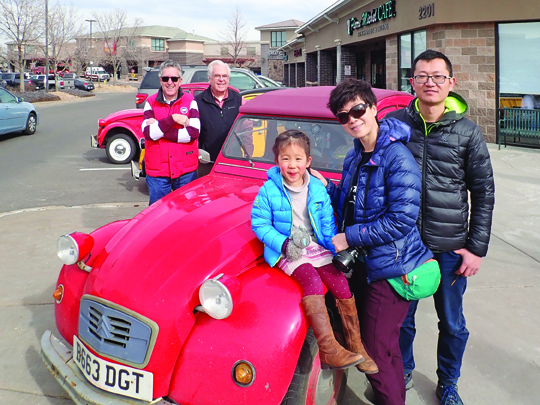
by Mark Smiley | Mar 1, 2018 | Travel
by Lisa Marlin

Around The World: At the Pierre Michel French Cafe in Littleton, Camilo Salazar, left, and Gary Daniels, met up with Jie Ding, Chang Luo, and their daughter Yuding who are traveling around the world in their 1985 Citroën 2CV.
England. Russia. China. Colorado. Nine months into their two-year road trip, the Luo Family has traveled to all these places with their primary mode of transportation being a red 1985 Citroën 2CV. This small, no-frills French car was produced from the late 1940s to 1990 and still garners interest worldwide.
A group of Denver-area Citroën enthusiasts greeted Chang Luo, wife Jie Ding, both 38, and their four-year-old daughter Yuding, when the family stopped for lunch at a French café in Littleton on January 31. They’d recently journeyed to the Arctic Circle and were driving south through the Americas.
“It’s just life on the road,” said Ding, after unbuckling Yuding from a car seat in the back where their luggage is also stacked. “Chang enjoys cars so much and I enjoy traveling and meeting people so much and this car just combines our interests, so we enjoy it.”
This is not their first road trip. In 2011, Luo got the job of an automobile engineer in London. Before moving there, he and Ding carefully studied the feasibility of driving from their home in Shanghai to his new job in London along the ancient Silk Road and decided to do it. Five years later he bought and restored the Citroën, then he quit his job so he and Ding could take their young daughter on an even longer road trip before she starts school. Why travel in a 33-year-old car? “This car is very interesting. I put a lot of effort into it. It has to be this car,” he said.
Ding said the experience enriches their family time. “For two years we can spend 24 hours a day together, to plan together, to see things together. I think that’s really important and we appreciate that we have this time to do that,” she said.
The first leg of their trip began in April 2017 when they left England and drove through 19 countries on their way to China to visit family and friends. From there, they shipped the car to Vancouver, British Columbia.
“I do almost all the driving,” Luo said. “And the car needs attention from time to time, maintenance, servicing, and I do it all myself.” This seemed to be especially true in Colorado. “The elevation of Colorado is phenomenal, and the car feels it. The power has lost quite a few horses I would say, and the start can be quite tricky.”
He lifted the hood as the local Citroën enthusiasts gathered to peer inside and talk with him about the engine. Among them was Camilo Salazar who has owned several of the cars and keeps in contact with other owners around the world; that’s how he heard about the Luos’ trip and began emailing with them to help coordinate their trip through Colorado.
“The Citroën has the most impressive suspension in automobiles ever,” Salazar said, which makes it great for long distance trips. He said it’s also very simple to work on. “It’s basically a glorified lawnmower,” he said, which makes it louder than most cars and slower, topping out at 70 miles per hour.
Denverite Gary Daniels drove his Citroën across town to meet the Luos. It’s one of several he’s owned over the years. “Everybody has an interest in the car. You just have to ride in one,” Daniels said. “It’s so very versatile.”
Versatility can be important when traveling around the world in a car. Even though the Luos have a general plan to reach Argentina in a year, they’re not following a

Under The Hood: The Citroën is an air-cooled front-engine, front-wheel-drive economy car introduced at the 1948 Paris Mondial de Automobile and manufactured by Citroën for model years 1948-1990. In total, Citroën manufactured almost 9 million 2CVs and variants.
direct route by any means. After leaving Denver, they drove up Pike’s Peak, which was on their must-visit list in Colorado, but then changed their plans to head south from there, and instead ventured toward Montreal to celebrate the Chinese New Year with friends. On February 20, they sent word that they would be going to New York before traveling toward southern California where they’ll cross the border into Mexico. Wherever they go, they mostly stay in the homes of families they meet along the way or that they find through hospitality and networking services such as CouchSurfing.
Ding is blogging, in Chinese, about their adventure so their family and friends back home can keep up. “We have lots of stories to share with our followers to tell them what is going on in other countries. The normal family, what do they do?” she said. “Meeting car club friends has been the best part of our trip, we have been so surprised to see there are still quite a lot of Citroën fans in North America.”
After having lunch in the French café with their new Colorado friends, the family loaded back into their Citroën, buckling Yuding in her car seat. Luo said his daughter is coping very well with her new lifestyle. “She entertains herself in the car by drawing, singing, looking around, especially when we were in the north, in Alaska and northern Canada where there were many wild animals. That was a lot of fun.”
In a blink, they were off again, wide-eyed and heading down the highway in their bright red Citroën, adventure bound.
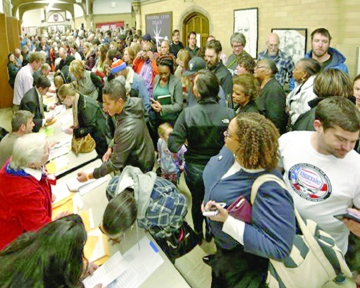
by Mark Smiley | Mar 1, 2018 | Main Articles
by Julie Hayden
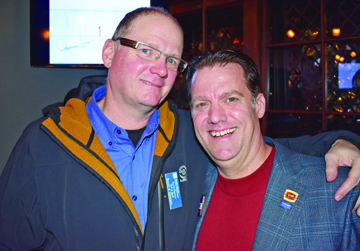
Family Ties: Steve Barlock, right, a GOP gubernatorial candidate is seeking to get on the ballot through the caucus system. He is pictured here with David Peterson, left, owner of the Bull & Bush. They both attended the Greater Glendale Chamber of Commerce Business After Hours at Salvage Restaurant last month. Barlock’s father Ed, an attorney, helped get the Bull & Bush off the ground in the late ’60s and early ’70s.
Colorado Republicans and Democrats are hosting their party caucuses in March 2018. And while the two parties do not see eye to eye on a lot these days they do agree on one thing. The precinct caucuses are a crucial part of the political process.
“When you attend your precinct caucus you can be a deciding vote of who gets on the ballot,” says Denver Republican Party Chairman Jake Viano. “This is where it all starts as to whose name is actually on the ballot. The people at the precinct caucuses are the ones who start the vetting process on all of the possible candidates.”
Mike Cerbo, Chairman of the Democratic Party of Denver, explains, “The precinct caucuses are grassroots democracy and that has a long tradition in this state.”
The caucuses are held the first Tuesday of March, this year that’s March 6, 2018. The precinct caucuses are held in neighborhood locations like schools, libraries or homes. People attend the caucuses to start the process of choosing candidates for the 2018 Democrat and Republican state primary ballots. Delegates are chosen at the precinct level to represent candidates at each party’s various assemblies.

2016 Democratic Caucus In Denver: Both political parties agree Colorado’s precinct caucus system is grassroots democracy at its best.
They will also help shape the party’s platform. “If you want to make the political party better, “Viano says, “Show up at the caucuses. This is where the platform starts. It’s your opportunity to have your voice heard on the candidates and the issues.” Political insiders say it’s also a good way to get to know your neighbors. “It’s a great way to meet like-minded people in your neighborhood,” Viano says.
In Colorado, candidates can get on the ballot by going through the caucus system or by gathering petitions. Some question the caucus system. Colorado’s Republican Party Chairman Jeff Hayes earlier this year sent a letter to county Republican officers in which he wrote: “Our caucus system is arcane and new people are often justifiably paranoid about missing key information or ‘insiders’ controlling access or process.” That drew immediate fire from others who say the precinct caucus system is the heart and soul of our democracy.
Many see neighborhood caucuses as the truest form of grassroots representation. Cerbo says, “Could the process be updated? Maybe. But the rules are tied up in statutory language and it could be hard to make a lot of changes.”
Party officers want to make sure people understand the ballot referendum passed by voters last year to have “open primaries” does not affect the precinct caucuses.
The June 26 Colorado Primary is open to unaffiliated voters this year. But to participate in the March precinct caucuses, you have to have been registered as a Republican or a Democrat since at least January 8, 2018, and at the address in the precinct since February 5, 2018.
Viano says he is pushing for record numbers of people showing up at the Denver Republican caucuses and hopes that enthusiasm continues through the November general election. He says, “We have to show up to help Republicans win statewide.”
Cerbo is also hoping for a strong turnout at the Democrat caucuses. “There is a lot of interest this year.”
Both chairmen advise get there early. The caucuses start at 7 p.m. and you can pre-register starting at 6:30 p.m. They wrap up at approximately 9 p.m.
To determine the location of your caucus and get further information visit www.colo radodems.org or www.cologop.org.
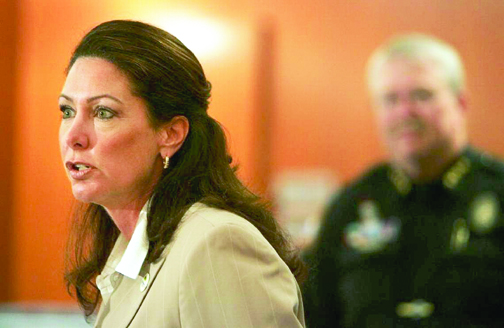
by Mark Smiley | Mar 1, 2018 | Main Articles
by Glen Richardson

Target: Mayor of Hallandale, Florida, Joy Cooper was viewed as an honest and competent mayor of the city since 2011. In 2012 the FBI targeted her and in 2018 filed three felony counts and one misdemeanor charge against her for taking what appears to be minor campaign contributions in 2012. It allowed her political opponent Keith London, apparently favored by the FBI, to take over the city. Many believe that the charges are politically motivated by the FBI and may be similar to the false corruption charges brought by the FBI against Alaska Senator Ted Stevens and former Virginia Governor Bob McDonnell overturned by the U.S. Supreme Court.

Hidden Clues: In a June 2016 guest editorial by Nasrin Kholghy (sister-in-law of Mohammad Ali Kheirkhahi) titled “Truth, Lies and Coverups” she included a rendering of what the proposed project might look like. Numerous readers wrote to the Chronicle, that if you look very closely at the figures in the graphic, above, almost all of the individuals are dressed in Islamic garb. It is not known whether the rug merchants intended that the project in Glendale be largely limited to one group of people and exclude others although no such intent has ever been publicly stated by them.
According to the U.S. Congressional Permanent Select Committee on Intelligence various top FBI officials, including James Comey, Andrew McCabe, Peter Strzok and Lisa Page, had definite preferences on who they wanted to be the President of the United States and allegedly took actions to implement their preference.
Apparently, at the local level, the FBI may also want to be able to select who gets to head up towns and municipalities regardless of who the voters may prefer. Under the Obama Administration the FBI and the Justice Department also got involved in hyper-local zoning decisions under the rubric of fighting Islamophobia as well as other social justice causes. The FBI recently had the Mayor of Hallandale Beach, Florida, removed in order to have her political opponent, favored by the FBI, Keith London become mayor. The FBI may have plotted to do the same in Glendale.
The Denver FBI under Jonathan Grusing, head of the Public Integrity Section appears to have wanted Glendale to approve the building of a massive apartment/condominium building on Colorado Boulevard that was adamantly opposed by Glendale citizens and Denver neighborhoods.
Persons who publicly opposed the Kheirkhahi/Grusing project were harassed and threatened by FBI undercover agent Charles Johnson, at the direction of Grusing, at their homes and places of work. If persons complained about Johnson’s strong-arm tactics to the local police in Glendale and Lakewood, Grusing sent in FBI Special Agent Kimberly Milka to further intimidate them, apparently for the purpose of getting them not to testify against Johnson in court. Possibly the Department basis for attack on everyday citizens exercising what they thought was their constitutional right to oppose a real estate development project, was that Kheirkhahi and his extended family are Islamists. The Obama Justice Department a pparently deemed any such opposition to be a form of Islamophobia even though most of the people who opposed the project had no idea of what religious identity the owners of the land had.
pparently deemed any such opposition to be a form of Islamophobia even though most of the people who opposed the project had no idea of what religious identity the owners of the land had.
Moreover, and perhaps more importantly, Agent Grusing allegedly developed a close personal relationship with Mohammad Ali who, along with family members, owned the Authentic Persian and Oriental Rugs shop along Colorado Boulevard and the associated 3.8 acres of developable land where the massive apartment/condominium project would be built. Kheirkhahi and his related family are all from Iran and have maintained close business relations with relatives and business associates in Iran as well as China and India. It is not known whether Kheirkhahi and/ or family members may also have been FBI informants concerning Iran or the Iranian American community in the United States.
Individual citizens who voiced opposition to the project were hunted down and harassed until Johnson’s arrest by the Glendale Police Department on March 17, 2016.
The FBI demanded Arapahoe County D.A. George Brauchler dismiss all charges against Johnson “for reasons that cannot be disclosed.” Brauchler suspected that something illicit was being undertaken by Grusing and the FBI and demanded that the request be in writing, signed by the Denver Special Agent in charge. He then made the letter a public document. Because of Brauchler’s courageous actions the FBI plot was exposed to the public and became national news due to national investigative reporters like Trevor Aaronson of the internationally respected website The Intercept headed by Glen Greenwald.
After the Glendale Cherry Creek Chronicle reported the opposition to Kheirkhahi’s project Fox 31 News discovered that the offices of the Chronicle were under 24-hour surveillance by undercover operatives presumably under the direction of the FBI.
Johnson had posed as a documentary filmmaker in the Cliven Bundy case in Nevada, and was expected to be a key witness in the Nevada trial until all charges were dismissed with prejudice in January by U.S. District Court Judge Gloria M. Navarro due to massive fraud and misconduct by the FBI and the U.S. Department of Justice. It is not known whether Grusing played any role in the fraud on the court in Nevada.
What was not known at the time was FBI Special Agent Grusing’s plan to remove Glendale elected officials as well as city department heads who opposed his friend Kheirkhahi’s project as the FBI had accomplished in Florida.
Joy Cooper was the mayor of Hallandale, Florida, a small city (population 37,113) on the east coast of Florida in Broward County north of Miami. It is the home of Gulfstream Park Racing and Casino. Ms. Cooper had a reputation as a conscientious and honest mayor in the town, but in 2012 the FBI decided to go after her.
Undercover FBI agents pretended to be wealthy developers and they approached a lawyer friend and supporter Alan Koslow and pretended to seek favor for a project in Hallandale Beach. She met with the undercover agents and the lawyer with the meetings recorded on audio or video. The agents met with Cooper and agents at City Hall and the FBI contends promised favorable treatment in return for two campaign contributions of $5,000 each, one before a primary and one after.
Contribution limits for that election were $500 per person. Attorney Koslow delivered checks from 10 individuals who each contributed $500 for Cooper’s re-election campaign.
What was surprising is the small amount of the purported bribe as campaign contributions. Moreover, bundling of contributions is done throughout the United States and is not illegal. The Mayor of Denver and Denver City Council members take in hundreds of thousands of dollars in campaign contributions from Denver developers, their lawyers and lobbyists and the developers receive extraordinary favorable treatment notwithstanding citizen outrage throughout the city. Taking on mayors of large towns like Denver by the FBI would create political firestorms and thus mayors of small towns are ones more often targeted by the FBI and which fit perfectly with Grusing’s plan.
Perhaps in Hallandale, there is on the tapes, the so-called quid pro quo statement whereby the mayor guarantees approval of the project in return for the relatively small contributions but many in the community are highly skeptical. They note infamous false corruption scandals undertaken by the FBI and the U.S. Justice Department in the case of U.S. Senator from Alaska Ted Stevens and former Virginia Governor Robert McDonnell.
In Glendale, Deputy City Manager Chuck Line reported that persons posing as wealthy foreign developers appeared to repeatedly ask questions of him trying to solicit bribes. Eventually Line concluded that the individuals were undercover FBI agents or informants sent by Grusing seeking a political coup.
In a meeting in Glendale, FBI Agents Grusing and Johnson tried to solicit a Glendale businessman with close financial con
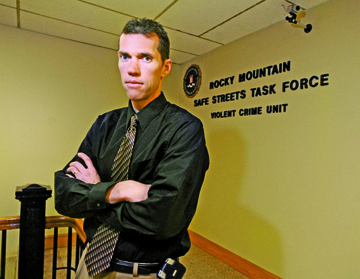
nections to Kheirkhahi to wear a wire and offer bribes to Glendale Mayor Mike Dunafon. The local businessman declined and reported the attempt to local officials. Mayor Dunafon had previously reported other individuals were involved in possible bribe attempts. The Glendale police would report the same to the FBI until they determined it was the FBI who were the ones setting up the bribe attempts.
Why was Special Agent Grusing trying to get officials in Glendale to take bribes? Hallandale Beach, Florida, appears to provide the answer. By charging Cooper, it resulted in Florida Governor Rick Scott removing her as mayor and promoting longtime rival Keith London to be elevated to the spot. If Dunafon would have been charged, then Mayor Pro-Tem Paula Bovo would have become mayor. While Ms. Bovo was ostensibly an ally of Mayor Dunafon, her husband was suspected to be working with the Kheirkhahi family and his car was allegedly spotted in front of their store. He may also have been in regular contact with the FBI.
With Dunafon out of the picture Kheirkhahi’s massive project might easily pass an FBI intimidated City Council. If the charges were found to be fraudulent and Dunafon reinstituted as mayor it would not matter as the prior City Council approval would stand.
The FBI refuses to comment on the allegations related to G

Small Town USA: Hallandale, Florida, is a small town (population 37,113) on the east coast of Florida north of Miami. It was previously best known as the home of Gulfstream Horse Racing Park and Casino until the FBI decided to undertake an undercover sting to replace Mayor Joy Cooper with her political opponent Keith London.
rusing and the Kheirkhahi project and it is assumed if forced to, the agency would claim it was just engaged in monitoring honest and good government. Moreover, it would assert that Grusing’s and Kheirkhahi’s relationship was purely professional in nature. But as the Whitey Bulger case of FBI malfeasance in Boston demonstrated, professional relationships often morph into much more. Since the FBI is accountable at the local level to no one it is likely the exact nature of its assault on the citizens and institutions of Glendale will never be fully revealed. The old Roman saying — Quis custodiet Ipsos custodes (Who watches the watchmen) — has never been so true as it applies to the FBI. The Roman Praetorian Guard was formed to protect Roman emperors but they soon took it upon themselves to remove and replace the emperors with persons selected by them.
Such corruption of the FBI under James Comey has been alleged to have occurred in Washington. If Glendale is any example the rot has infected the lower levels of the bureau also. As Grusing is believed to be a rising star in the FBI, average U.S. citizens may have much to fear in the coming years from their public servants at the Federal Bureau of Investigation.

by Mark Smiley | Mar 1, 2018 | Feature Story Bottom Left
by Ruthy Wexler

Home Delivery: Part of what makes Longmont Dairy unique is the positive, loyal and individual way they treat employees, who tend to remain with the company. Workers are rewarded and celebrated for good performance; e.g., if route drivers have very low errors, they’ll earn free days off. Promotions are almost always done from within. LDF’s operation manager began as a route driver 14 years ago and worked his way up.
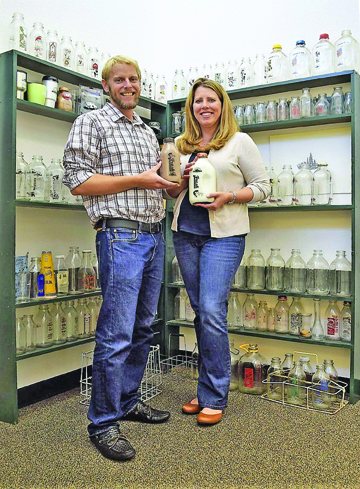
Co-Owners: Katie Herrmann and Dan Boyd, co-owners of Longmont Dairy Farm, pose with a variety of glass bottles, which their customers swear make the milk taste more delicious. Step-siblings, Katie and Dan, grew up working at Longmont Dairy. Both left Colorado to try their wings in other states and other jobs. Then, at coincidentally the same time, both decided to return home and enter the family business. In 2015, they bought in.
In the good old days, doctors made house calls, businesses answered phones and milk got delivered. Glendale itself was long called “Cowtown” due to the many dairies that used to be located there. But wait! Longmont Dairy — one of two remaining farms in Colorado that sells milk directly to customers — has just expanded into Cherry Creek, Glendale and Wash Park. Now residents in those neighborhoods can sign up to have bottles of fresh milk (and other products) delivered straight to their door.
Tradition!
“We’re very proud it’s only 48 hours, roughly, between the time our 550 cows are milked, and drivers get that milk to customers,” says Katie Herrmann, who, along with stepbrother Dan Boyd, is the third generation to run this family business.
Longmont Dairy began in 1965 when three fellows with experience in the dairy industry — Jim Boyd, Reese Boatman and Karl Obluda — bought a small herd of cows and built a processing plant behind the Boyds’ home in Longmont, Colo. By then, science had made milk from faraway dairies safe to drink, so increasing numbers were buying it in supermarkets. But the trio decided to create what they loved: an old-fashioned dairy.
By 1988, when Reese Boatman and Jim Boyd (remaining partners) retired, certain traditions had been established: producing the best possible product by feeding cows with the best quality grain and “serving customers beyond their expectations.”
Jim’s son David, along with his wife Susan (Herrmann’s mother), took over next. Although the couple modernized and grew the business substantially — reorganizing it as Longmont Dairy Farm, Inc. (LDF) — they kept what mattered, including home delivery, which had been almost entirely phased out across the country.
In 1991, a crisis arose: only one manufacturer of glass milk bottles remained in the U.S. Reluctantly, David and Susan began to explore other containers. Then — just as they were running out — their bottle cap supplier decided to produce the bottles.
Local
Herrmann and Boyd are aware they are carrying on a legacy.
Both grew up working at the dairy. Both left Colorado to figure out what they wanted from life — which, it turned out after some years, was to circle back home and buy into the business.
Despite opposite skill sets — Herrmann oversees marketing and customer service; Boyd’s in charge of the plant and trucks — they share one vision: to run Longmont Dairy with that same combination of business acumen and old-fashioned values.
Not the easiest balancing act — especially in a world where Amazon Fresh can deliver all your groceries almost immediately.
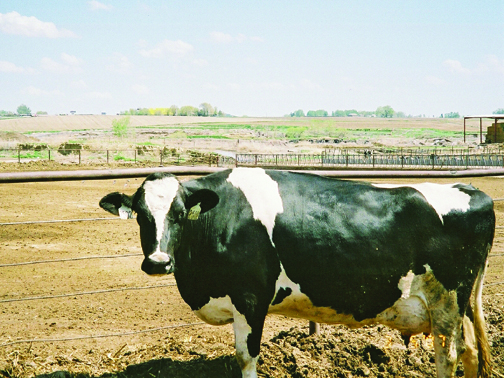
Longmont Dairy’s Own Cows: To maintain quality, they decided to offer milk produced by only their own cows and bottled in their plant. The cows are milked around the clock, the milk is sent from the farm to their processing plant where it is bottled within 24 hours. Then, at 10 p.m., the deliveries start, and milk is on the customers’ doorsteps before breakfast.
“Our hope,” says Herrmann, “is people will continue to support a local business that provides a premium product.”
Understanding Milk
“There are misconceptions about milk and labels,” Herrmann explains. “We give our cows high quality feed from local farmers. Our milk is very clean and natural. But since the herd’s feed is not ‘certified organic,’ and we do treat them with antibiotics when they’re sick, we can’t call our milk organic. However, we do not use supplemental growth hormones or steroids.
“People think if it’s not labeled organic, milk might contain antibiotics. Not possible. Because any residue of antibiotics in milk is illegal. Every day, we do a ‘snap test’ — and if there’s even a smidgeon of antibiotic residue, the entire tank is disposed of.”
Caps For Sale!
After Herrmann and Boyd began a Park Hill route two years ago, they began getting calls: when will you be in other Denver neighborhoods? That’s when they made plans to expand in this direction. “It’s much easier to open up a route next to an existing route,” explains Boyd. “But there are challenges. Our drivers are out at night. These new neighborhoods are denser than suburban areas, making that a bit tricky. But our drivers are tenacious, skilled and dependable.”
“Another challenge is that residents in new neighbo
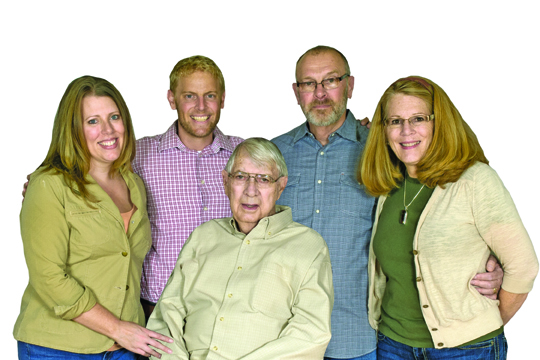
Generations: Longmont Dairy Farm began as an “old fashioned dairy” with clear values: giving customers the best possible product along with service beyond expectation. Those values have been handed down and honored by family members. Here are three generations together: left to right, top row: Katie Herrmann, Dan Boyd, David Boyd (Dan’s father, Katie’s stepfather), Susan Boyd (Katie’s mother); front row: Jim Boyd (who has since passed away), one of the three men who started the business in 1965.
rhoods aren’t familiar with what makes us different,” adds Herrmann. “Like our core values, protecting the environment with reusable bottles and recyclable caps. And giving back to communities.”
Longmont Dairy not only partners with local charities and organizations and gives milk to two Ronald MacDonald houses, they help hundreds of schools with their Milk Caps for MOOOLA program.
Any school within LDF’s delivery area can sign up. They set up a box for all the LDF bottle caps students collect and Longmont pays five cents for each cap. To date, 5 million caps have been turned in and Longmont has given schools over $250,000.
“It’s the easiest way to earn money for your school,” enthuses Jenny Kahn, secretary at the William Roberts K-8 School in Stapleton. “With Longmont’s check, we created a scholarship fund for the 8th grade trip. Plus, the kids were aware they were helping the environment.”
Local Goodness

Former Cowtown: Glendale throughout much of its history has been a booming town by adopting whatever Denver rejects. At the beginning of the 20th century Denver regulated out of business many of its dairy operations which Glendale welcomed with such open arms that the city became known as Cowtown.
Caps can be returned from any LDF bottle, including half & half, chocolate milk, eggnog and “protein milk.” Longmont’s products have grown in variety, but the emphasis remains local — or natural. “Eggs, from a farm north of Fort Lupton,” lists Herrmann. “Granola and oatmeal from Wheatridge. Cheese from Oregon. Mary Mountain Cookie Dough from Fort Collins …”
Several “new, really exciting” products will soon be added, “after our plant expansion,” says Herrmann. “But we’re not revealing what they are until early summer. We want our customers to be surprised.”
For more information, call 303-776-8466 or visit www.longmontdairy.com.
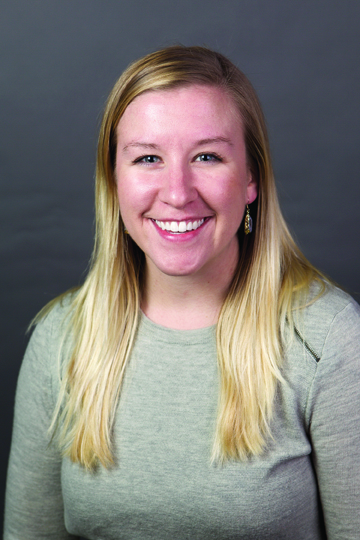
by Mark Smiley | Mar 1, 2018 | Feature Story Middle Left
by Monica Heinrichs
Meat continues to rank at the top of America’s choices for protein; however, more and more people are considering plant-based proteins as a real option for their health. Plant-based nutrition, also known as vegetarianism or veganism, has been on the forefront of nutrition studies for several years now. Time and time again, these studies are showing that plant-based diets, specifically protein sources, are exceeding the benefits of those proteins that are animal-based. Plant-based nutrition can maximize intake of essential nutrients, often missing from a meat-based diet. Vitamin E, heart-healthy omega-3 fat, folate, and maybe most important, dietary fiber are all increased with a plant-based diet.
If you have ever considered adding in more plant-based proteins and limiting meat-based proteins, here are some things you should consider.
- Take things gradually. Although there are many benefits to adding more plant-based choices into your diet, it is important to take it slow. This same tip goes hand-in-hand with working out. If you are new to working out, you should start slow and increase difficulty as you see progress. When it comes to nutrition, it is important to consider how your body is reacting to any dietary changes. Don’t eliminate meat out of nowhere, and then load up on salads for a week. Allow your body time to adjust, and adapt, to the new foods you introduce.
- Focus on Health. It should be noted that plant-based diets also include things like potato chips and dark chocolate. This is not to say that these things cannot be eaten, but the goal of a plant-based diet is to increase foods like fruits, vegetables, nuts, and legumes. Eating only potato chips is technically eating plant-based, but it won’t give you the strength to hit the gym.
- Be prepared to eat more. Working out requires taking in enough calories. If you typically eat meat and breads, you don’t have to eat very much before you reach your daily calorie limit. This is because oil and fat are calorically dense. On the other hand, vegetables, fruits, nuts and legumes are high in nutrients but low in calories. This means, if you choose to add more plant-based proteins into your diet, and remove meat, you will need to eat more plant-based foods throughout the day!
- Expect better recovery. Vitamin E aids in disease prevention of the heart and blood vessels as well as improving physical and muscular endurance. Vitamin E can increase your energy and reduce levels of stress on your muscles after you exercise. Less soreness, yay! Nuts and seeds are some of the best sources of vitamin E. Mangoes, avocados, and butternut squash are also great sources. Adding these plant-based foods into your eating habits surrounding your workouts can aid in faster recoveries and help your muscles and joints feel stronger.
- Be flexible. If you choose to add more plant-based foods, and remove meat, you will need to be flexible and alter your diet as you go to keep feeling your best. Experiment with what you eat, when you eat, and how it affects your performance. You may find you have more energy for workouts in the morning, or you may be at your best before or after a snack. Remain open to different solutions and make adjustments as needed.
Combining more plant-based foods and your workouts can be done effectively, with these considerations. Protein rich nuts, seeds, and legumes are great options for improvements in muscle growth and provide additional vitamins and minerals. Overall, eating more plant-based foods can help you rethink your approach to food. The trick is to listen to your body and eat nutritiously.
Monica Henrichs is the Health and Wellness Director at the Glendale Sports Center. She is originally from Wisconsin and is a Green Bay Packers fan. She is a certified Personal Trainer, Health Coach, and Group Fitness Instructor with eight years of experience working with all types of people toward their health and fitness goals.
Monica Heinrichs
















